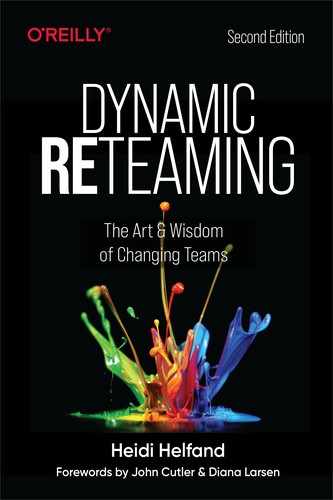Foreword by John Cutler
I first met Heidi while working at AppFolio, a company Heidi mentions in this book. Soon after I joined the team, I began to hang out with Heidi, Paul, and the other coaches. There was something about their work that I found very interesting and inspiring—and challenging, especially during a period of rapid growth.
Behind the office, near the train tracks, was an out-and-back walking path. Team members often did one-on-ones on this path, and while Heidi wasn’t on my immediate team, she was always willing to lend an ear. Heidi’s many superpowers—her curiosity, patience, storytelling, and deep care for the humans she worked with—were in full effect. You’d need to be a Star Trek: The Next Generation fan to get this, but picture ship counselor and empath Deanna Troi as a coach at a SoCal tech company. That’s Heidi.
I didn’t realize it at the time, but interacting with that group of coaches, and Heidi in particular, would have a profound impact on my career. They encouraged me to start speaking and writing. They showed me that it was OK to nerd out about certain things like team health and what Heidi would later describe as dynamic reteaming. They inspired me.
It was a year or two later that Heidi started telling me about this book project. In 2016, the seeds of Dynamic Reteaming appeared as an AppFolio experience report for Agile2016. Heidi didn’t stop there. You could tell she had found her groove. She was mining her amazing network, deep in research mode, picking up stories and patterns like a sponge.
Santa Barbara has a small but thriving tech scene, and Heidi has worked at many of the real standouts. They appear in this book, but like any tech hub, Santa Barbara has a unique cultural fingerprint. So she cast a wide net—New Zealand, Iceland, London, New York, San Francisco, and beyond—to do more research. Every time I checked in, she had more stories, and more conviction about the topic of dynamic reteaming.
And here we are. The second edition.
This is an important book. It is important because it discusses real-world change and real humans trying to do their best work. So many books in this domain treat teams as either stable and static, or disposable and interchangeable. Or they discuss scaling (and downsizing) in mechanistic terms, more suitable to talking about software architecture. No stories. No gradient.
Meanwhile, the real world of product development is beautiful and messy. Heidi takes a pattern-based approach rooted in relatable stories and makes sure to leave us with actionable tips on the first read. But she doesn’t gloss over the nuance and humanity inherent in the work. Reteaming is always happening—for better or worse—and Heidi tackles that head on.
I’ll close with a theme that punctuates the book. We often talk about reorgs in violent terms. Big and bold. Broad strokes. I’d like to think that much of what Heidi presents here is a safer alternative. She doesn’t shy away from the fact that big changes are sometimes necessary or happen outside of our control. But I’m confident that by exploring the ideas in this book—by strategically reteaming and gracefully responding to reteaming—we can replace this violence with joy and productive adaptability.
I trust you’ll end up reading this a couple times. I did. Thank you, Heidi, for sharing your curiosity and care and concern for us geeks.
